About the church
The East Wall Window
The most prominent of St George’s stained glass is the five-panel window in the east wall of the chancel above the high altar. It was installed as a memorial to George Lax Farthing who was rector of the parish from 1896 to 1904 and responsible for the building of the church. He was in office at the time of the consecration of St George’s by the Bishop of Chichester on September 29th 1902 and thus the first rector of St George’s.
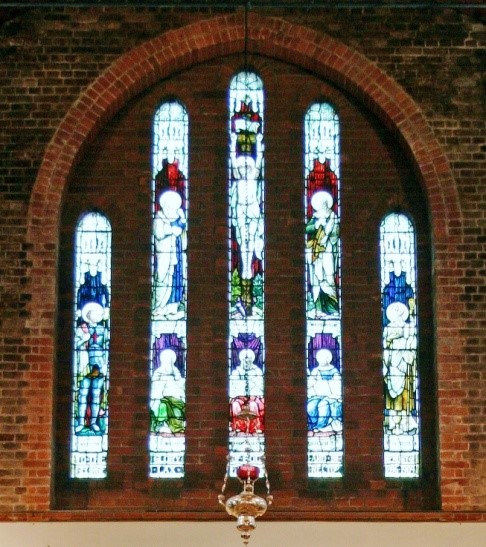
Stylistic attribution indicates that the windows are the work of Heaton, Butler and Bayne a well known firm of stained glass artists who had a studio in Convent Garden London in the latter half of the 19th Century, their work included stained glass for churches throughout the United Kingdom including Westminster Abbey and Peterborough Cathedral, the firm closed in 1953.
It is not clear exactly when the window was installed; the minutes of the 1915 Vestry meeting note the ‘approval for East Window in memory of GLF’. Before that date there was apparently just clear glass for in 1912 there is reference to the gift of ‘a blue cloth frame for the lower portion of the east window (to screen the eyes of the congregation at early services from the glare of the sun)’
The left outer panel of the window shows St George, our patron saint, dressed in armour. The right outer panel shows St Richard, patron saint of the diocese. At his feet is a chalice, traditional in representations of Richard, who is reputed to have once dropped a chalice that landed upright without spilling any wine.
The three central windows show St Mary BV, Jesus on the Cross and St John, who was present at the crucifixion. In the lower sections of these windows there are shown three Old Testament prophets, Isaiah, Zacharias and Jeremiah, each seated and holding a tablet inscribed with a quotation from their works.
The Rood Figures
Attached to the west wall of the church, above the high altar, is a central crucifix with a large figure of the crucified Christ and on either side the figures of St Mary BV and St John. Each year the crucifix plays an important element in the Good Friday Liturgy, however it is only comparatively recently that the figures have been in this location.
When St George’s was originally built a rood screen separated the chancel from the nave as can be seen in the 1929 photograph of the church shown below. The crucifixion figures were positioned on the rood beam above the screen.
The screen was removed in 1963 and, in 1983 during Father David Brecknell’s period in office, the crucifixion figures were taken down and painted before being installed in their present position.
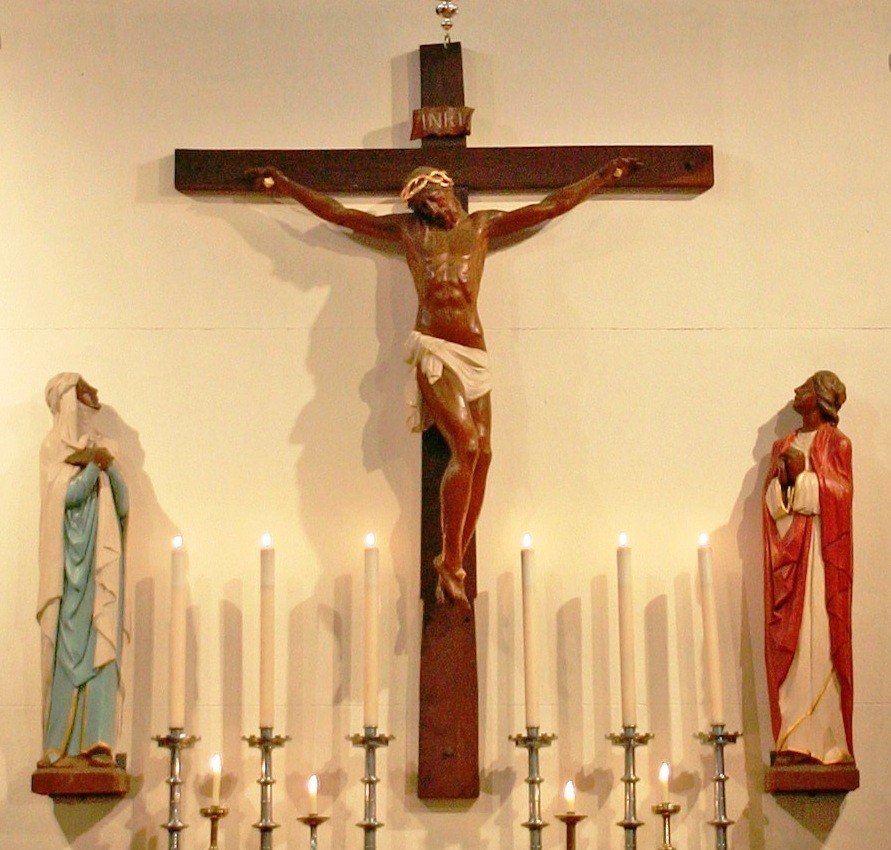
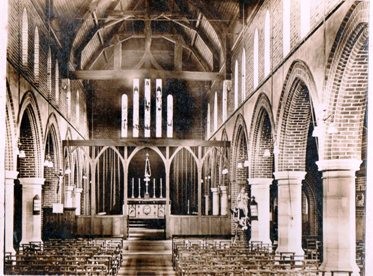
The word rood is derived from the Saxon word rood or rode, meaning “cross”. The rood screen is so called because it was surmounted by the Rood itself, a large figure of the crucified Christ. Commonly, to either side of the Rood, there stood supporting statues of saints, normally Mary and St John.
Also to be seen in the picture is the statue of St Mary with the baby Jesus and one of the Stations of the Cross which are still in the church. Note also the gas lighting fittings, electric lights were not installed until 1950.
The Altars
Over the years St George’s seems to have become a repository for redundant altars from other churches. As a result we now have three altars of fine quality and appearance. When the Holy Rood Convent at Lindfield was closed in 1996, the sisters donated a fine stone topped altar with a set of magnificent frontals to St George’s. It is now in use as the high altar.
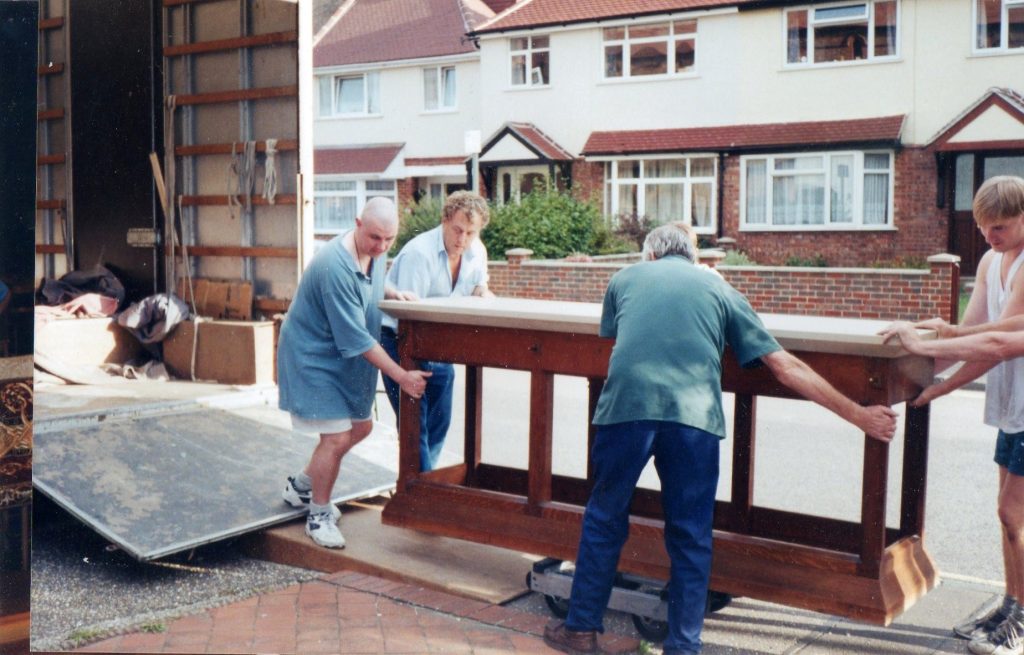
St George’s former high altar was used for a while as the low altar but proved to be too heavy and large for this purpose. It has now been taken to St Mary’s church where it is kept by the architectural partnership that practice there. The former table altar, thought to be of Victorian design, from St Mary’s has been brought to St George’s where it is, it now used as our low altar. When All Saint’s Church at Portfield was closed in 1981 its main altar was transferred to St George’s where has been installed in the Lady Chapel, it is also of Victorian design and fronted with carved ‘linenfold’ panelling.
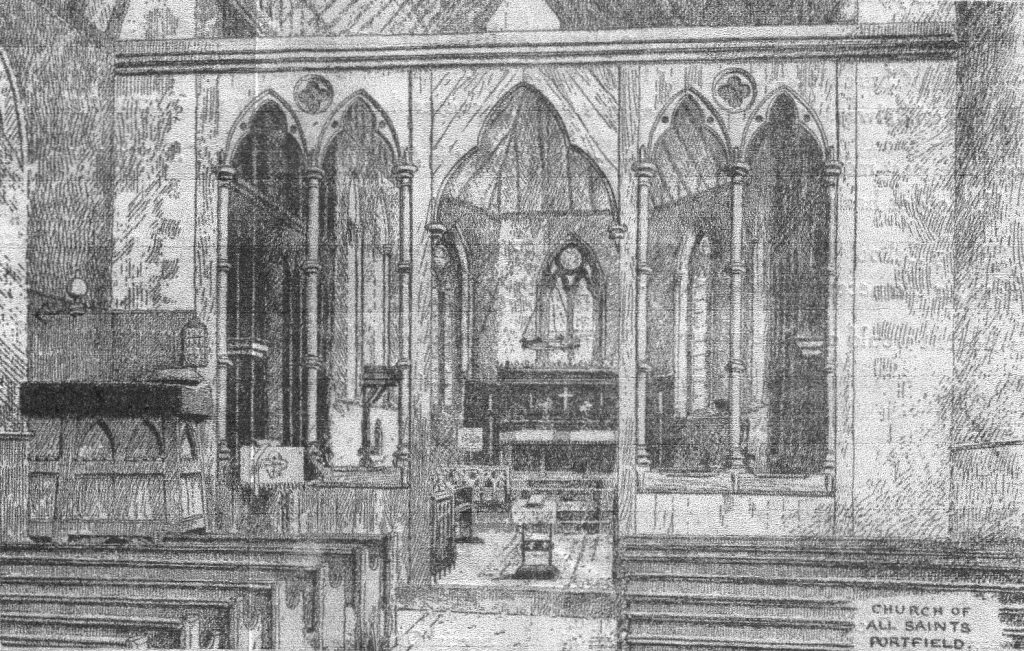
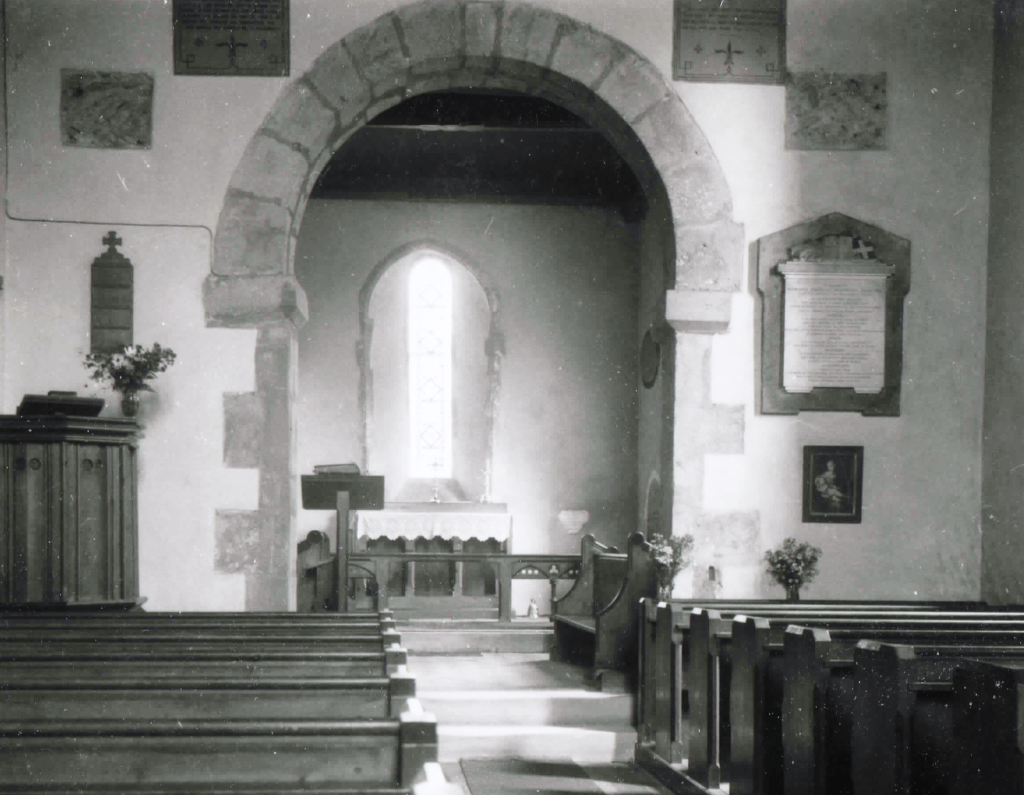
These changes resulted in the church having two surplus altars, one from the Lady Chapel and the original low altar; these are now used in the aisles as side tables. Also transferred from St Mary’s was a fine and valuable Jacobean table which a parishioner, Professor Frank Fielden, paid for to be restored as a memorial to his wife. This table is now used at the rear of the church.